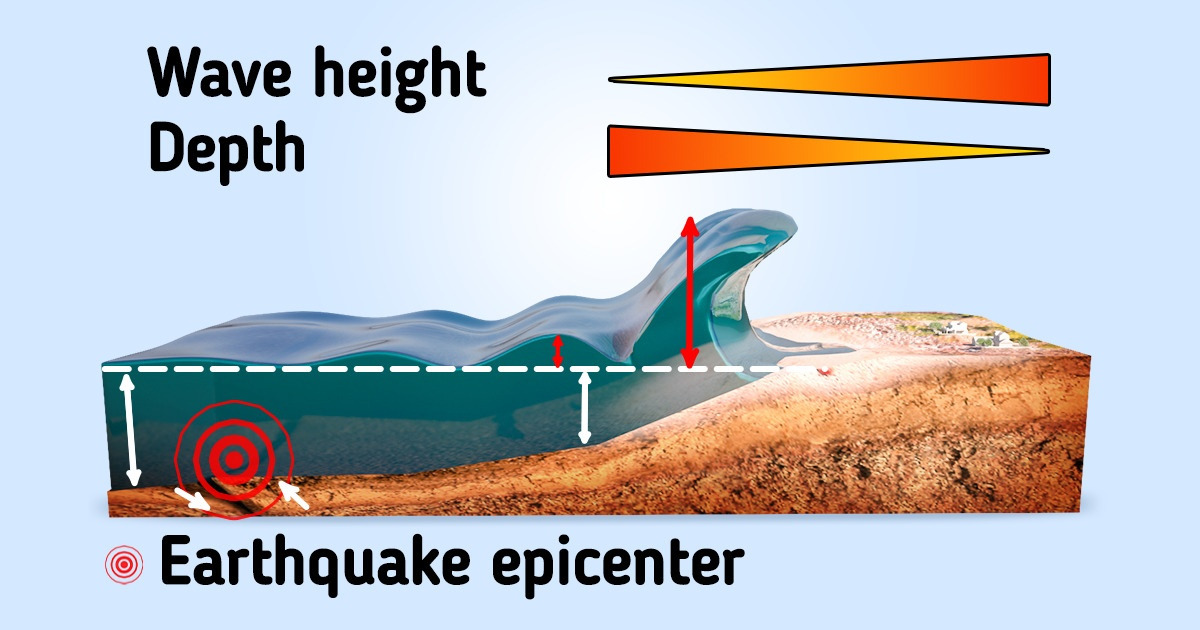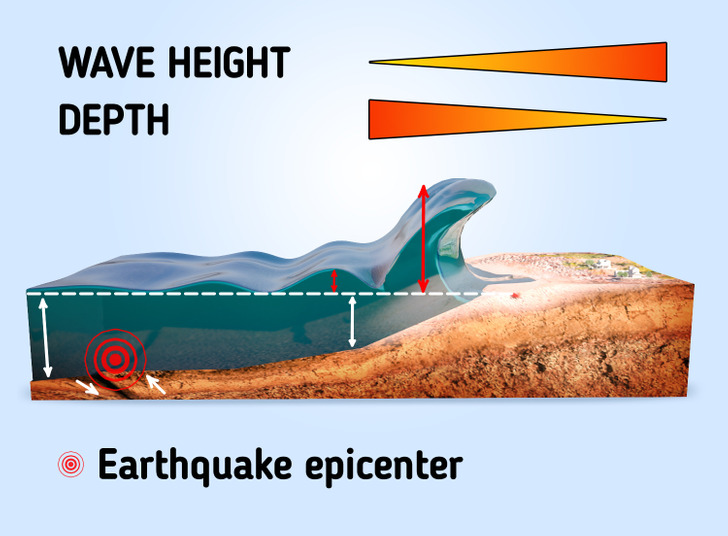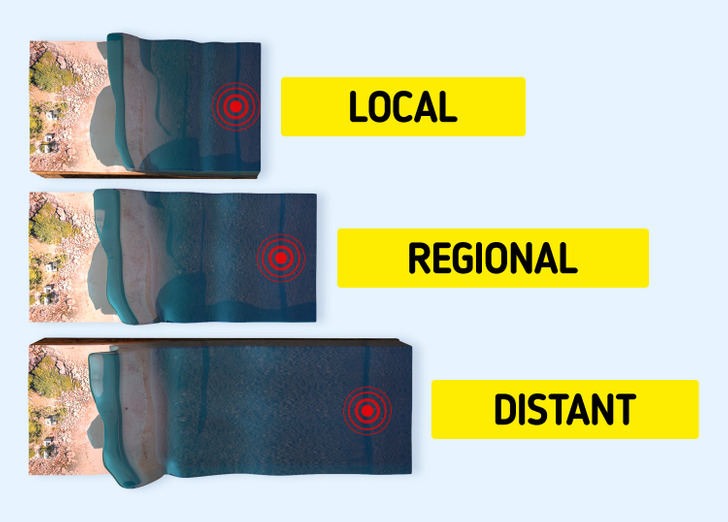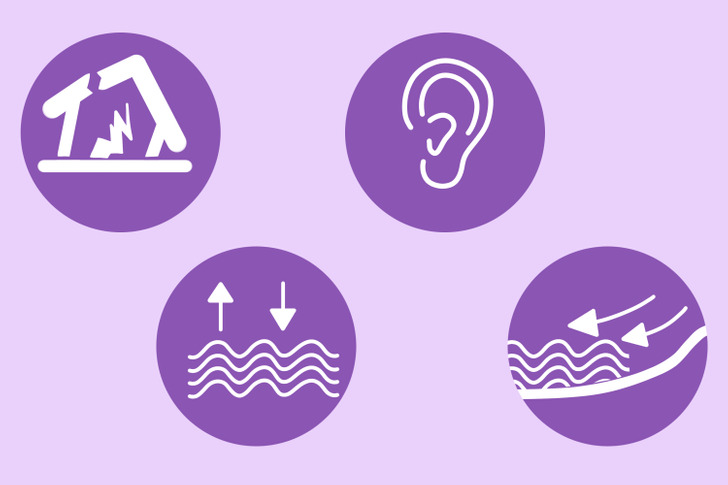A Simple Definition of a Tsunami

What is a tsunami?
5-Minute Crafts would like to tell you about what a tsunami is, and this knowledge can help you know when one is approaching and give you some time to escape.

A tsunami is a series of several waves caused by earthquakes, volcanic eruptions, underwater landslides, glacier calvings, meteorite impacts, and other phenomena. As a result, parts of the seabed begin to move and disrupt the water mass above it. The sea bottom moves vertically and pushes the water mass located on top so that a wave is formed.
The name means a “harbor wave.” However, this phenomenon is not like ordinary waves that appear due to winds or tides. Tsunami waves are long, and their speed depends on ocean depth. They travel as fast as jet planes over deep waters, slowing down when reaching shallow waters. The height of waves increases as it approaches the shore and the ocean depth decreases, usually reaching no more than 100 feet.
Historical background
Tsunamis are mentioned in ancient writings, which date back to the fifth century BCE. The oldest evidence dates back to 479 BCE. Even then, people assumed that earthquakes caused tsunamis.
However, there are still many unexplored questions in this area. For example, we still aren’t sure why strong earthquakes don’t cause tsunamis but smaller ones do.
Types of tsunamis

There are 3 types of tsunamis: local, distant and regional.
Megatsunami
A megatsunami is a tsunami that begins with a very large wave, which can be measured in tens, hundreds, or even thousands of feet.
It’s formed as a result of landslides or other impactful events that abruptly displace large volumes of water. The height of a megatsunami wave exceeds the height of an ordinary tsunami by tens or hundreds of feet.
Signs of a tsunami approaching the shore

The following natural signs can warn you about an approaching tsunami:
- A long-lasting earthquake
- A very loud noise or roar coming from the sea or ocean
- The ocean receding unusually far
- A sudden change in the character of the ocean
If you witness any of the above signs, try to get to higher ground as soon as possible or drive as far from the shoreline as possible.